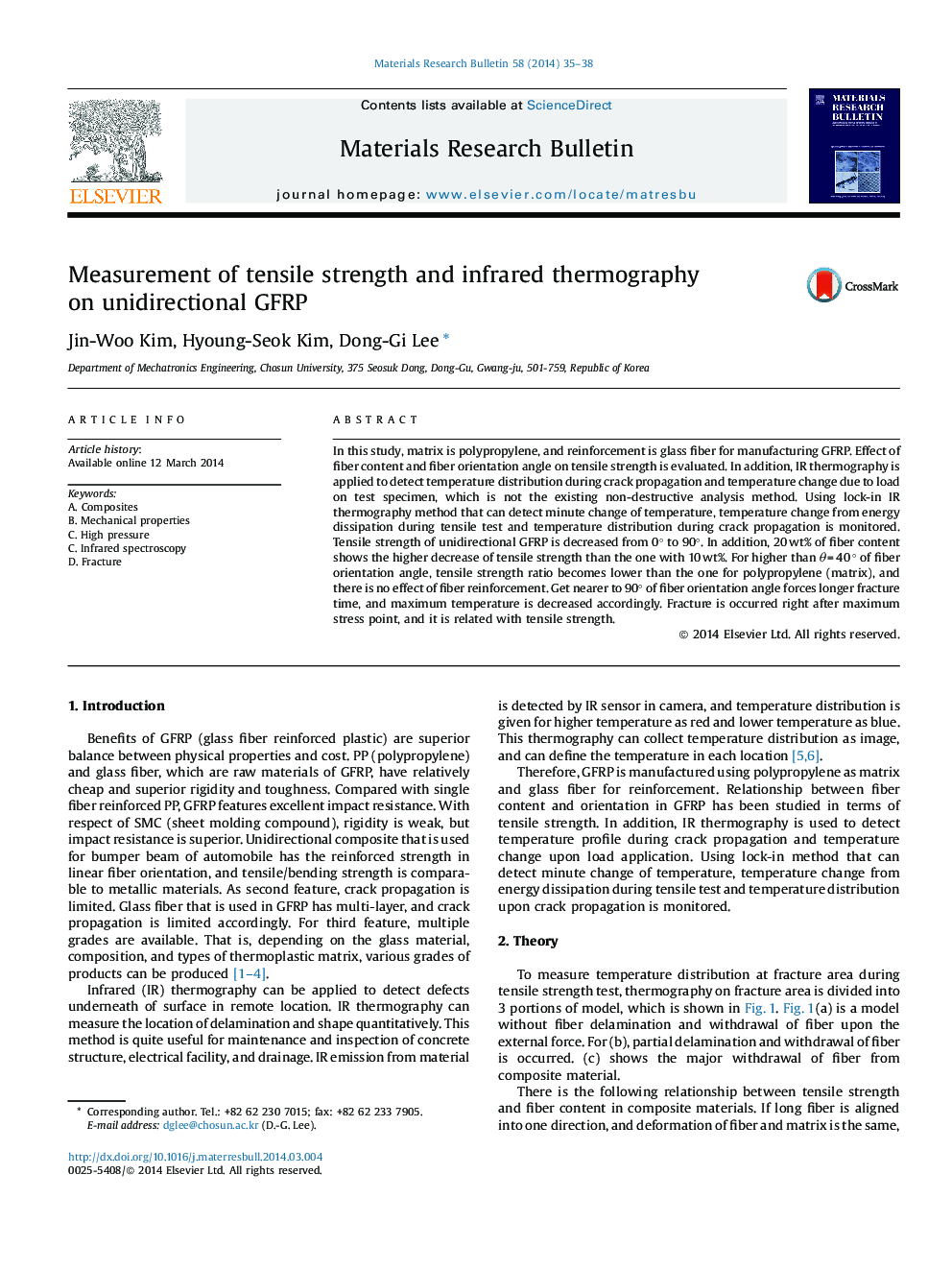| Article ID | Journal | Published Year | Pages | File Type |
|---|---|---|---|---|
| 1488299 | Materials Research Bulletin | 2014 | 4 Pages |
•The method to analyze temperature distribution using IR thermography is suggested.•Relationship between tensile strength and temperature distribution can be determined.•Get nearer to 90° of fiber orientation shows the longer fracture time and lower maximum temperature.•Fracture is found right after the maximum stress point, and it can explain the relationship with tensile strength.
In this study, matrix is polypropylene, and reinforcement is glass fiber for manufacturing GFRP. Effect of fiber content and fiber orientation angle on tensile strength is evaluated. In addition, IR thermography is applied to detect temperature distribution during crack propagation and temperature change due to load on test specimen, which is not the existing non-destructive analysis method. Using lock-in IR thermography method that can detect minute change of temperature, temperature change from energy dissipation during tensile test and temperature distribution during crack propagation is monitored. Tensile strength of unidirectional GFRP is decreased from 0° to 90°. In addition, 20 wt% of fiber content shows the higher decrease of tensile strength than the one with 10 wt%. For higher than θ = 40 ° of fiber orientation angle, tensile strength ratio becomes lower than the one for polypropylene (matrix), and there is no effect of fiber reinforcement. Get nearer to 90° of fiber orientation angle forces longer fracture time, and maximum temperature is decreased accordingly. Fracture is occurred right after maximum stress point, and it is related with tensile strength.
Graphical abstractFigure optionsDownload full-size imageDownload as PowerPoint slide
